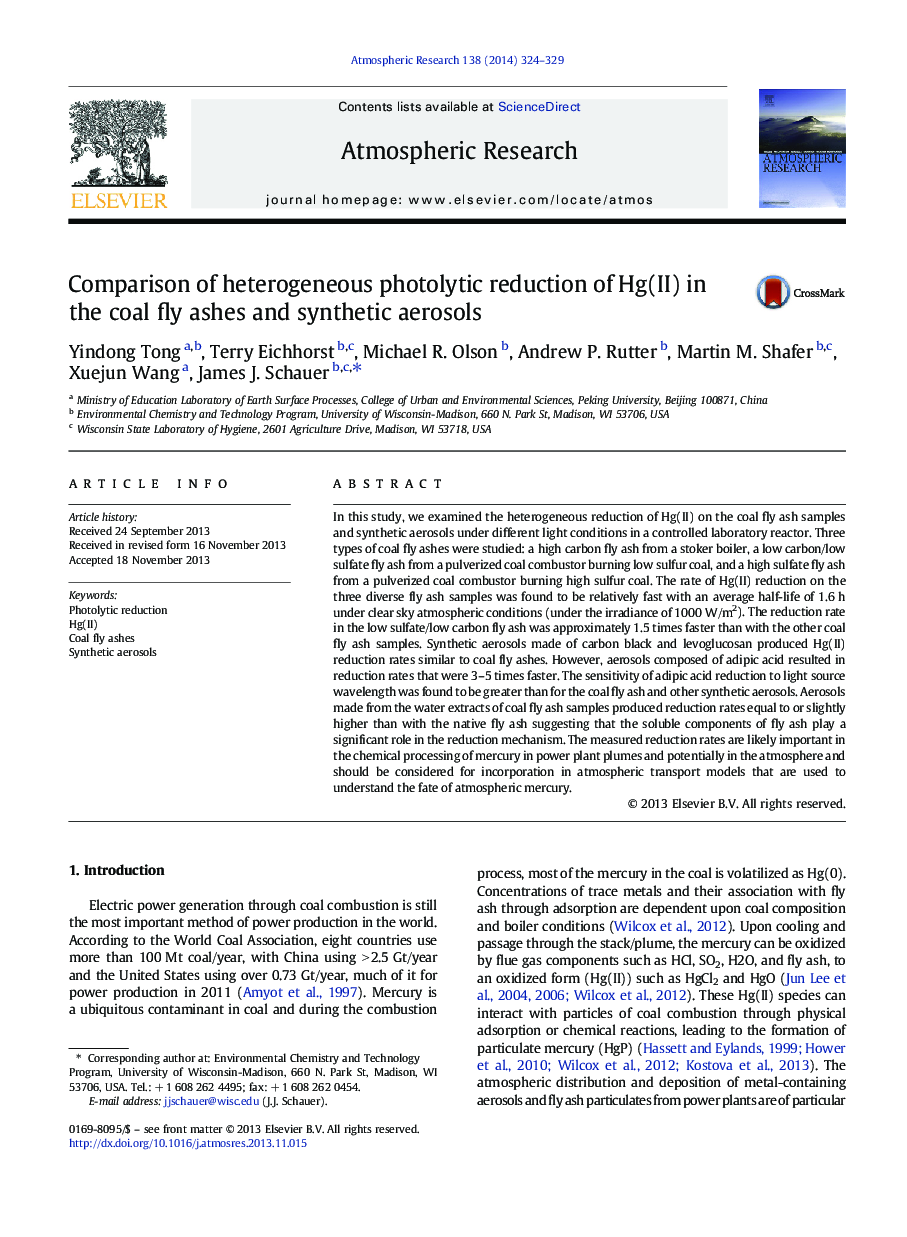| Article ID | Journal | Published Year | Pages | File Type |
|---|---|---|---|---|
| 6343667 | Atmospheric Research | 2014 | 6 Pages |
â¢Photolytic reduction of Hg(II) was observed on the surfaces of coal fly ash samples.â¢The observed half-life of reduction was a few hours under atmospheric conditions.â¢The reduction rate on the low sulfate/low carbon fly ash was the highest.â¢Soluble components of fly ash play are similar to fly ash as a media for reduction.
In this study, we examined the heterogeneous reduction of Hg(II) on the coal fly ash samples and synthetic aerosols under different light conditions in a controlled laboratory reactor. Three types of coal fly ashes were studied: a high carbon fly ash from a stoker boiler, a low carbon/low sulfate fly ash from a pulverized coal combustor burning low sulfur coal, and a high sulfate fly ash from a pulverized coal combustor burning high sulfur coal. The rate of Hg(II) reduction on the three diverse fly ash samples was found to be relatively fast with an average half-life of 1.6Â h under clear sky atmospheric conditions (under the irradiance of 1000Â W/m2). The reduction rate in the low sulfate/low carbon fly ash was approximately 1.5 times faster than with the other coal fly ash samples. Synthetic aerosols made of carbon black and levoglucosan produced Hg(II) reduction rates similar to coal fly ashes. However, aerosols composed of adipic acid resulted in reduction rates that were 3-5 times faster. The sensitivity of adipic acid reduction to light source wavelength was found to be greater than for the coal fly ash and other synthetic aerosols. Aerosols made from the water extracts of coal fly ash samples produced reduction rates equal to or slightly higher than with the native fly ash suggesting that the soluble components of fly ash play a significant role in the reduction mechanism. The measured reduction rates are likely important in the chemical processing of mercury in power plant plumes and potentially in the atmosphere and should be considered for incorporation in atmospheric transport models that are used to understand the fate of atmospheric mercury.
Graphical abstractDownload full-size image
